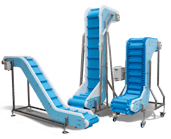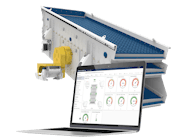The chemical industry has experienced several challenges in the past few years, which is particularly true for established chemical facilities in North America and Europe. Not only is the global competition growing, with new entrants to the market in China and India, but also established plants are struggling with aging infrastructure while needing to reduce project costs and boost production.
The changes over the past 10 years have made efficiency and agility more than just buzzwords for the industry; they’ve become requirements for survival. Operating costs and investment decisions must be carefully considered to ensure that operational productivity is maximized, especially now that most operations compete on a global scale. Processing must meet ever-more stringent environmental regulations, product output must increase to meet demands and new equipment must fit within the space available while meeting production requirements. Add to that volatile feedstock costs, and it becomes clear that the industry is wrestling with some significant challenges.
How did we get here?
The changes in the industry happened relatively quickly. Just as the industry was recovering from the financial crisis of 2008, a host of new players entered the field, mostly in China and India. A number of these new players are backed by their governments and focus more heavily on resource monetization and industry as a tool for economic development, which is in contrast to the plants in Western Europe and North America, which operate on a shareholder value creation model.
The new players are able to build their facilities with current technology without financial constraints because of government backing — whereas the established Western plants are having to work with legacy equipment, which draws on maintenance and personnel resources.
And though many chemical companies would like to navigate back to "business as usual" that won’t be possible without some significant infrastructure upgrades and capital investments. One of the priorities is replacing unreliable legacy, mechanical 2-wire flow measurement points with more accurate and reliable 2-wire equipment.
Critical infrastructure upgrades
Aging infrastructure with legacy equipment can cause several challenges from process upsets to unexpected shutdowns, and inaccurate measurements, which can result in wasted feedstock and manufacturing off-specification product. All these problems will cost a facility money that was not budgeted, which cuts into profit margins and shareholder value.
One solution to avoiding these kinds of problems is through upgrading existing 2-wire flow measurement devices. In the past, Coriolis technology was never considered as an upgrade path since it was required to run power and signal cable separately. Even if a facility had wanted to use Coriolis, it wasn’t feasible because there wouldn’t have been enough available cable rack space and installing AC power where power is not centrally located in a plant would have added a dramatic amount of capital expenditures. Turbine, differential pressure (DP) and positive displacement (PD) meters were the only options available. The problem with each of those devices is that they have moving parts that require regular maintenance. Many plant managers would prefer a Coriolis flowmeter, which has no moving parts and is repeatably accurate and reliable under some of the most challenging conditions. Now that there is a new 2-wire Coriolis meter on the market, plant managers can replace unreliable 2-wire flow points and take advantage of the benefits of Coriolis technology.
Figure 1. Examples of potential cost savings. Courtesy of Emerson Automation Solutions
2-wire Coriolis to meet the need
The recently released 2-wire Coriolis transmitter makes it possible to have the benefits of Coriolis without needing to run additional cabling for retrofits or planning, engineering and installing AC power for plant expansion projects. The 2-wire Coriolis transmitter also offers the latest technological innovations of onboard meter health diagnostics. The transmitter also offers a data historian that provides a complete audit trail with a clock that time stamps process data and diagnostics reports.
One of the biggest benefits of upgrading to a 2-wire Coriolis, aside from the increased reliability and reduced maintenance costs — no moving parts in the meter — is the benefit of not having to engineer and budget for additional wiring and installing AC power. Figure 1 shows some calculations to indicate the cost savings of not having to plan for additional wiring along with the need to design AC power conduit, scaffolding, transformers and panels.
These are significant cost savings when planning an upgrade or when starting the design and budgeting phase for a newly planned facility. Capital expenses can quickly add up and overwhelm a budget.
Safety
In any facility using petroleum or crude as a feedstock to create a number of different chemical compounds, from gasoline to agricultural chemicals to household chemicals, safety is a top priority. Many of these newly created compounds — as well as the feedstock — are flammable or combustible and can cause safety issues at various points in the process. In all cases, they are harmful to humans and the environment alike. But even if a facility were to use crops, woody plants or algae as a feedstock, the danger of potential harm to humans and the environment remains, and stringent safety protocols must be observed.
A safety integrity level (SIL) rating of 2 for single use or 3 for multiple use, ensures a standardized level of reliability and risk reduction of equipment used. Similarly, having diagnostic tools onboard the 2-wire meter setup can provide facility managers with real-time insight into the process while also keeping an audit trail of the process over time.
Looking ahead
The trends identified in the chemical industry for the next decade are sustainability, digitalization, innovation and accelerated globalization. To meet these goals, it only makes sense that a facility has the best-in-class equipment.
Retrofitting legacy 2-wire meters with new, smarter, 2-wire Coriolis meters will improve production, make a facility more agile in response to market fluctuations, and allow for better compliance with regulatory sustainability and safety standards.
To meet the need for digitalization, it again makes sense to have the most current tools available installed where possible, as these new devices come standard with digital outputs and easy-to-read interfaces that can send data to software applications on laptops, tablets or even phones, ensuring data is almost instantly available and actionable.
Globalization means meeting the competition head-on with the quality products consumers demand, increasing production while closely watching costs, despite volatility in feedstock markets. The days of a plant operating in a just a single region are long gone. Chemical producers must compete on a global scale with plants that were built some 50 years ago. The good news for these producers is that their suppliers are looking for new and innovative ways for these older plants to compete on a global scale.
Mike Klein is vice president of Global Chemical Industry Market¬ing for Emerson’s Flow Solutions business. He has worked at Emerson for 18 years and in the industry for 25 years. Klein received a bachelor’s degree in quantitative analysis and methods from Penn State University.
Anthony Gentile is a marketing product manager with Emerson Automation Solutions, Micro Motion. He has 15 years of experience in the area of Coriolis flow measurement and holds a bachelor’s degree in chemical engineering and petroleum refining from Colorado School of Mines, as well as an Master in Business Administration from Regis University.




